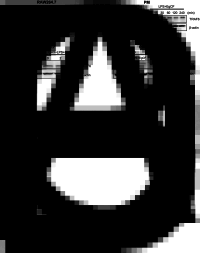Echinococcus granulosus cyst fluid suppresses inflammatory responses by inhibiting TRAF6 signalling in macrophages
- PMID: 33775265
- PMCID: PMC11010193
- DOI: 10.1017/S0031182021000548
Echinococcus granulosus cyst fluid suppresses inflammatory responses by inhibiting TRAF6 signalling in macrophages
Abstract
Echinococcus granulosus sensu lato has complex defence mechanisms that protect it from the anti-parasitic immune response for long periods. Echinococcus granulosus cyst fluid (EgCF) is involved in the immune escape. Nevertheless, whether and how EgCF modulates the inflammatory response in macrophages remains poorly understood. Here, real-time polymerase chain reaction and enzyme-linked immunosorbent assay revealed that EgCF could markedly attenuate the lipopolysaccharide (LPS)-induced production of pro-inflammatory factors including tumour necrosis factor-α, interleukin (IL)-12 and IL-6 but increase the expression of IL-10 at mRNA and protein levels in mouse peritoneal macrophages and RAW 264.7 cells. Mechanically, western blotting and immunofluorescence assay showed that EgCF abolished the activation of nuclear factor (NF)-κB p65, p38 mitogen-activated protein kinase (MAPK) and ERK1/2 signalling pathways by LPS stimulation in mouse macrophages. EgCF's anti-inflammatory role was at least partly contributed by promoting proteasomal degradation of the critical adaptor TRAF6. Moreover, the EgCF-promoted anti-inflammatory response and TRAF6 proteasomal degradation were conserved in human THP-1 macrophages. These findings collectively reveal a novel mechanism by which EgCF suppresses inflammatory responses by inhibiting TRAF6 and the downstream activation of NF-κB and MAPK signalling in both human and mouse macrophages, providing new insights into the molecular mechanisms underlying the E. granulosus-induced immune evasion.
Keywords: Cystic echinococcosis; EgCF; TRAF6; inflammation; macrophages.
Conflict of interest statement
The authors declare there are no conflicts of interest.
Figures







Similar articles
-
Echinococcus granulosus cyst fluid inhibits KDM6B-mediated demethylation of trimethylated histone H3 lysine 27 and interleukin-1β production in macrophages.Parasit Vectors. 2023 Nov 16;16(1):422. doi: 10.1186/s13071-023-06041-3. Parasit Vectors. 2023. PMID: 37974225 Free PMC article.
-
Echinococcus granulosus cyst fluid inhibits inflammatory responses through inducing histone demethylase KDM5B in macrophages.Parasit Vectors. 2023 Sep 9;16(1):321. doi: 10.1186/s13071-023-05948-1. Parasit Vectors. 2023. PMID: 37689671 Free PMC article.
-
Therapeutic effect of Echinococcus granulosus cyst fluid on bacterial sepsis in mice.Parasit Vectors. 2023 Dec 8;16(1):450. doi: 10.1186/s13071-023-06021-7. Parasit Vectors. 2023. PMID: 38066526 Free PMC article.
-
Echinococcus granulosus cyst fluid inhibits the type I interferon response by promoting ROS in macrophages.Acta Trop. 2024 Feb;250:107101. doi: 10.1016/j.actatropica.2023.107101. Epub 2023 Dec 14. Acta Trop. 2024. PMID: 38101763
-
[Echinococcus granulosus cyst fluid(EgCF) inhibits the migration and phagocytic function of mouse macrophages induced by LPS via inducing cytoskeletal rearrangement].Xi Bao Yu Fen Zi Mian Yi Xue Za Zhi. 2023 May;39(5):385-390. Xi Bao Yu Fen Zi Mian Yi Xue Za Zhi. 2023. PMID: 37248831 Chinese.
Cited by
-
Immunomodulatory effects of hydatid antigens on mesenchymal stem cells: gene expression alterations and functional consequences.Front Microbiol. 2024 Apr 9;15:1381401. doi: 10.3389/fmicb.2024.1381401. eCollection 2024. Front Microbiol. 2024. PMID: 38655088 Free PMC article.
-
Echinococcus granulosus cyst fluid inhibits KDM6B-mediated demethylation of trimethylated histone H3 lysine 27 and interleukin-1β production in macrophages.Parasit Vectors. 2023 Nov 16;16(1):422. doi: 10.1186/s13071-023-06041-3. Parasit Vectors. 2023. PMID: 37974225 Free PMC article.
-
Echinococcus granulosus cyst fluid inhibits inflammatory responses through inducing histone demethylase KDM5B in macrophages.Parasit Vectors. 2023 Sep 9;16(1):321. doi: 10.1186/s13071-023-05948-1. Parasit Vectors. 2023. PMID: 37689671 Free PMC article.
-
Dexmedetomidine suppresses microglial activation in postoperative cognitive dysfunction via the mmu-miRNA-125/TRAF6 signaling axis.Open Med (Wars). 2025 Jul 23;20(1):20251236. doi: 10.1515/med-2025-1236. eCollection 2025. Open Med (Wars). 2025. PMID: 40718798 Free PMC article.
-
Ghrelin is involved in regulating the progression of Echinococcus Granulosus-infected liver lesions through suppression of immunoinflammation and fibrosis.PLoS Negl Trop Dis. 2024 Oct 22;18(10):e0012587. doi: 10.1371/journal.pntd.0012587. eCollection 2024 Oct. PLoS Negl Trop Dis. 2024. PMID: 39436864 Free PMC article.
References
Publication types
MeSH terms
Substances
LinkOut - more resources
Full Text Sources
Other Literature Sources
Miscellaneous

